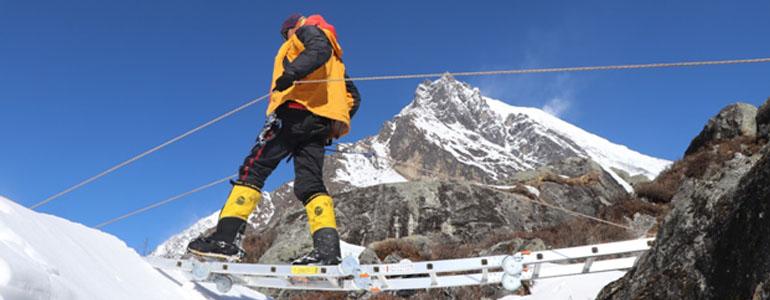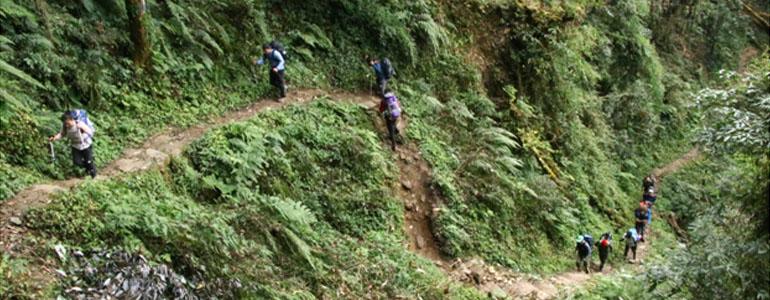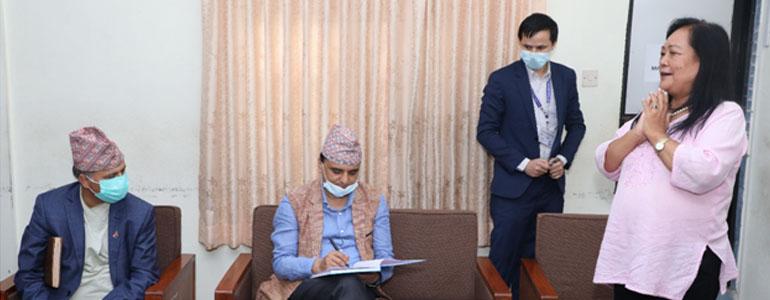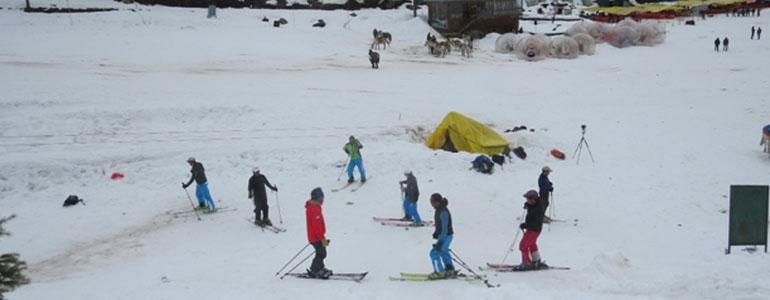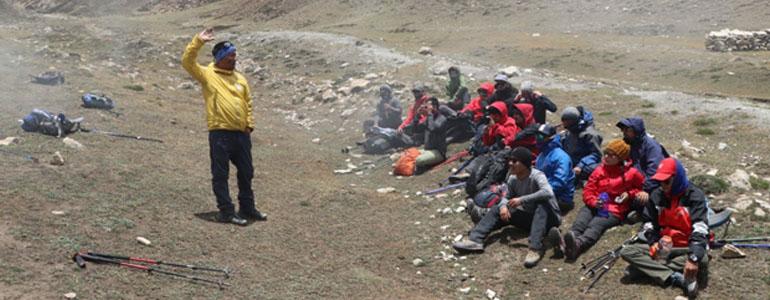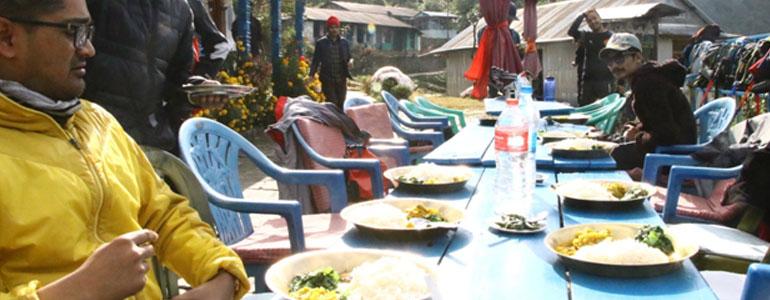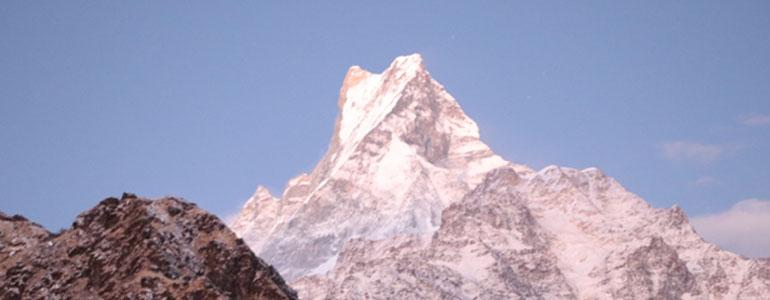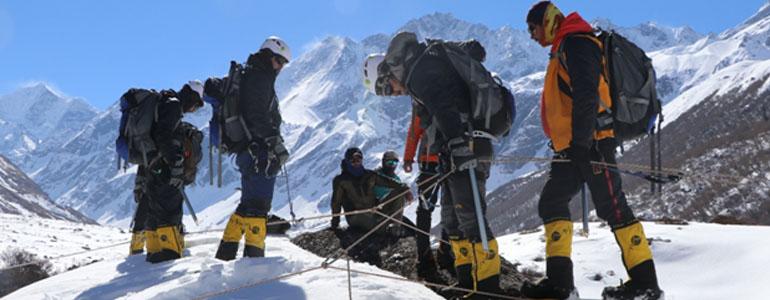With the intent of entertaining 20 lakhs tourists in the year 2020, the government of Nepal has designated the year as Visit Nepal 2020. According to the data provided by the United Nations World Tourism Organization (UNWTO), it definitely comes as a huge challenge for Nepal to ensure the increment of gross domestic product by the tourism industry from 7.5% to 25% along with an increase in the number of tourists by three times by the end of 2020. In order to celebrate 2020 as the Visit Nepal, the year 2019 has been nominated as the campaigning year for which various activities and events have also been set up.
In this regard, the role of the Sherpa community and especially those who have embraced tourism-based professions is huge and their contribution is colossal for the preservation and promotion of the tourism sector of Nepal. It is a well-known verity that Sherpas are known all over the world due to their bravery and honesty.
The world's tallest mountain, Sagarmatha with a height of 8848 meters from the sea level is the jewel for our nation. It had gained its popularity as a field of study and as a challenging mountaineering destination since the 19th century after being successfully ascended for the first time on May 19, 1953, by Tenzing Norgay Sherpa and Sir Edmund Hillary. Since that time, it was the efforts of a Sherpa due to the assistance of whom, Hillary was able to successfully climb the Everest for the very first time. Similarly, it was only after 1949 that the Government of Nepal opened up 414 mountains and peaks for climbing purposes. However, not all the peaks have still been ascended by the climbers.
The Himalayan region of Nepal consists of beautiful landscape. The Nepalese residing in such areas are courageous and also popular for climbing the mountain both nationally and internationally. To climb mountains and peaks is definitely a mighty as well as a risky undertaking. The Sherpa people from the Himalayas climb the steeps and slopes like terrains with snow and rocks. The weather and climatic conditions in the region are also extremely perplexing and it is very cold especially in the mornings and the evenings.
Therefore, to climb the mountains is a challenging task but even more, responsibility comes when one has to assist and guide others to climb the mountains. The scorching heat during the afternoons and extreme cold during the mornings and evenings make the challenge even more precarious. In such unpredictable weather conditions and the geographical extremities, high chances of missing out on the ways and being lost in the mountains lie as a huge possibility.
The risk of tripping and falling into the crevasses is equally terrifying. Along with the damage and casualties that can occur due to the occurrence of avalanches, mudslide, occasional hurricane-level winds and many other mountaineering-related disasters add up to the risk level. As such, it is the Sherpa climbers who can and display the will to risk their own lives in order to fulfil their responsibilities of guiding his/her member to climb the mountain. They reflect extreme discipline and self-restraint while at the field with their family in their heart and their professional responsibilities upon their shoulders. In this manner, the Sherpa climbers have been at all times maintaining and upholding the prestige of the nation through their benevolence.
They consider the mountains to be holy and only climb the mountains after their sacred rituals and proceedings with holy leader Padmasambhava Guru Rinpoche in their hearts. So, climbing a mountain to the Sherpas is much more than technically climbing as it is associated very strongly with the cultural and religious beliefs in the community. This is why the Sherpas are dedicated from their body and also from the soul to make every climb a successful one. Every time after a successful climb, they thank their holy deities.
Because of such sentiments, they risk their own lives to make every climb by guiding their members an efficacious one. During the journey, sometimes they have to encourage their members, sometimes they have to provide the courage to not give up and sometimes they also have to guide them and protect them like a guardian. While performing all such varied roles, they also have to ensure the comfort of the members as in the Himalayas it is very difficult to obtain good food and other basic necessities are in scarcity. They are at all times concerned about the conditions of their members, their appetite, their stamina and their strength to name a vital few. Hence, the effort that the Sherpas out at the field put continuously is a prodigious deal which is somehow also synonymous to the role of an army officer in the battlefield considering the difficulties and hitches throughout their journey.
However great the efforts and contributions of the Sherpas may be, a serious issue to ponder upon is that are we giving due credits to their efforts and efficiency? Or are the Sherpas being appreciated enough for the kind of work that they have been doing to in fact uplift the tourism sector of the country at an international level?
It is also a fact that due to the risks that pertain in the climbing sector, many climbers have lost significant parts of their bodies such as the hands, legs and eyes. Some even have lost their lives. Bearing in mind for this fact, it can be said that the life of a Sherpa is definitely not an easy and relaxed one.
In case of such mishaps and casualties, their family members have to suffer and many of them have also not been able to receive the necessary assistance making their livelihood a problematic one. Therefore, it is an absolute necessity to rightfully honour the contributions of the Sherpa guides in the mountains and provide the assurance to uplift and secure their and their families' livelihood from the community, state and national level. To make these professionals and future generations skilled and educated is the need of the present in order to produce better and efficient human resource in this sector. An environment that is conducive for them to work, earn and live a respectful life is very much important. This will also ultimately help in achieving the goals that have been set for the year 2020 and 2030. The Sherpas are the ambassadors of the tourism sector in Nepal and they have been promoting this sector at various platforms nationally as well as internationally.
Salute to their never-ending will and courage for uplifting the mountain tourism in Nepal!


